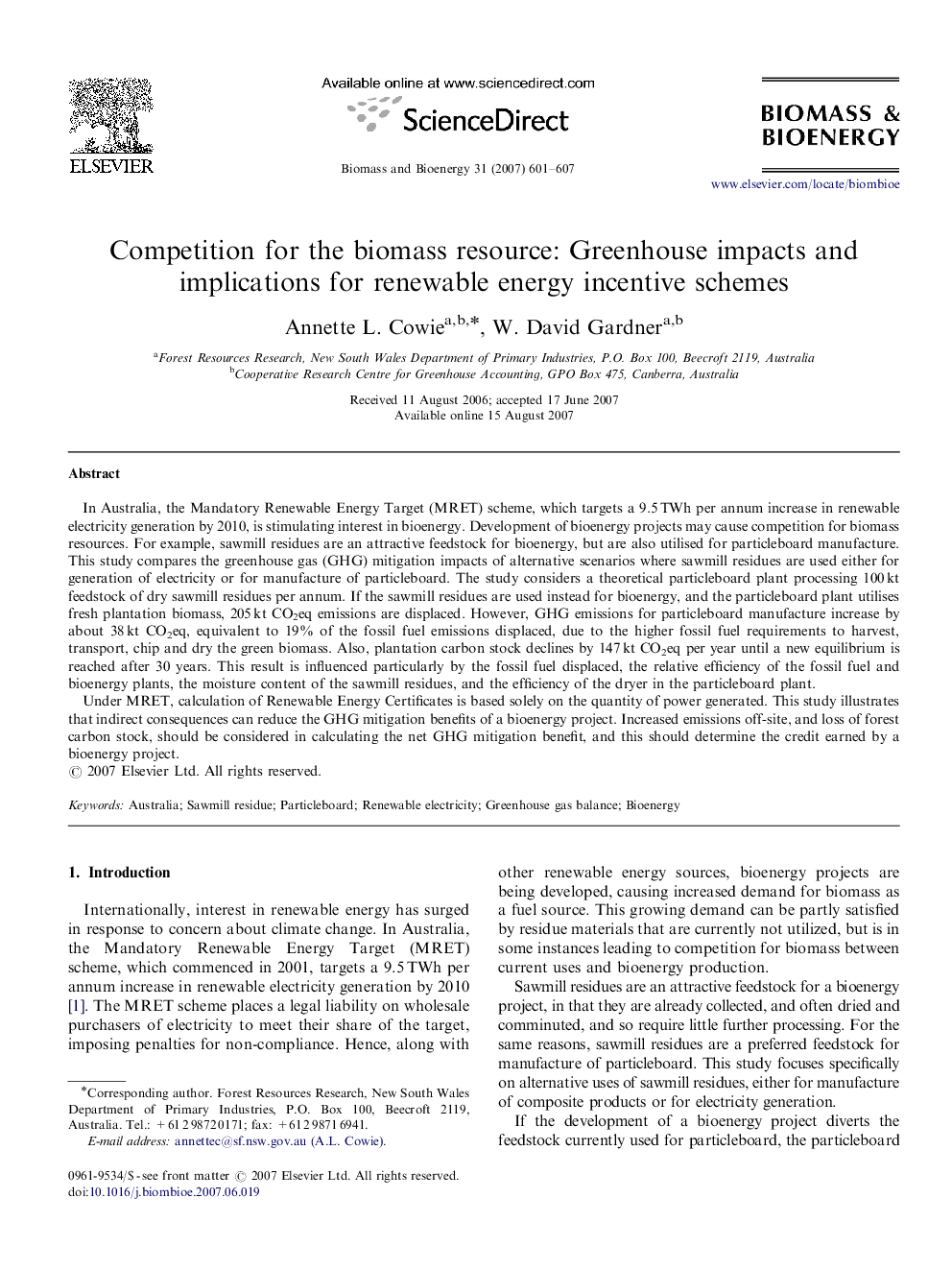| کد مقاله | کد نشریه | سال انتشار | مقاله انگلیسی | نسخه تمام متن |
|---|---|---|---|---|
| 678881 | 888680 | 2007 | 7 صفحه PDF | دانلود رایگان |

In Australia, the Mandatory Renewable Energy Target (MRET) scheme, which targets a 9.5 TWh per annum increase in renewable electricity generation by 2010, is stimulating interest in bioenergy. Development of bioenergy projects may cause competition for biomass resources. For example, sawmill residues are an attractive feedstock for bioenergy, but are also utilised for particleboard manufacture. This study compares the greenhouse gas (GHG) mitigation impacts of alternative scenarios where sawmill residues are used either for generation of electricity or for manufacture of particleboard. The study considers a theoretical particleboard plant processing 100 kt feedstock of dry sawmill residues per annum. If the sawmill residues are used instead for bioenergy, and the particleboard plant utilises fresh plantation biomass, 205 kt CO2eq emissions are displaced. However, GHG emissions for particleboard manufacture increase by about 38 kt CO2eq, equivalent to 19% of the fossil fuel emissions displaced, due to the higher fossil fuel requirements to harvest, transport, chip and dry the green biomass. Also, plantation carbon stock declines by 147 kt CO2eq per year until a new equilibrium is reached after 30 years. This result is influenced particularly by the fossil fuel displaced, the relative efficiency of the fossil fuel and bioenergy plants, the moisture content of the sawmill residues, and the efficiency of the dryer in the particleboard plant.Under MRET, calculation of Renewable Energy Certificates is based solely on the quantity of power generated. This study illustrates that indirect consequences can reduce the GHG mitigation benefits of a bioenergy project. Increased emissions off-site, and loss of forest carbon stock, should be considered in calculating the net GHG mitigation benefit, and this should determine the credit earned by a bioenergy project.
Journal: Biomass and Bioenergy - Volume 31, Issue 9, September 2007, Pages 601–607